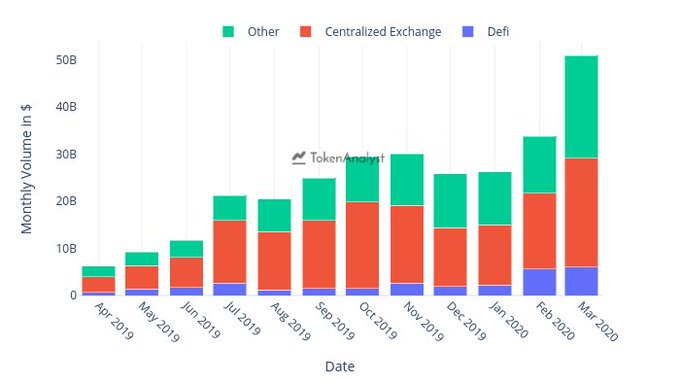Stablecoin On-Chain Activity at Record Highs but Will Crypto Market Inflation Follow?
On-chain activity for stablecoins has surged over the last year, increasing by 800% according to the latest market intelligence, but could the increase in stablecoin issuance create inflation in the cryptocurrency markets as past allegations against Tether and Bitfinex have suggested ?

In 2018, research published by John Griffins of the University of Texas and Amin Shams of Ohio State University investigated whether Tether, a stablecoin pegged to the US dollar, influenced Bitcoin and other cryptocurrency prices during the 2017 ICO boom.
Using algorithms to analyze blockchain data, the pair of researchers concluded that purchases with Tether were timed to follow market downturns which resulted in sizable increases in Bitcoin prices. They wrote, “ Rather than demand from cash investors, these patterns are most consistent with the supply-based hypothesis of unbacked digital money inflating cryptocurrency prices.”
Their research ultimately lead to Tether and Bitfinex being investigated by the Department of Justice for potentially using stablecoin issuance to inflate the price of Bitcoin.
Stablecoins On-chain up 800%
Lead researcher of TokenAnalyst, Ankit Chiplunkur announced in a tweet that the overall combined marketcap of stablecoins currently sits a $6.7 billion dollars. He wrote, “In the last 12 months, $290B worth of stablecoins were moved onchain, growing by 8.2 times in 12 months, from $6.2B in Apr 2019 to $50.9B in Mar 2020.”

Source:TokenAnalyst
So what could this mean for the crypto market with stablecoins at an all time high?
U.C Berkeley: Stablecoin issuances Do Not Inflate BTC Price
A new report issued last Friday by the University of California Berkeley’s Haas Blockchain initiative appears to directly contradict the crypto inflating stablecoin conclusion by Griffin and Shams.
Richard Lyons, U.C Berkeley’s Chief of Innovation along with Ganesh Viswanath-Natraj, a Professor at the Warwick Business School said that stablecoins are being leveraged by investors to react to market movements quickly but found no evidence that they are drivers of inflation or cause cryptocurrencies to collapse.
From the report, “We find no systematic evidence that stablecoin issuance affects cryptocurrency prices. Rather our evidence supports alternative views; namely, that stablecoin issuance endogenously responds to deviations of the secondary market rate from the pegged rate, and stablecoins consistently perform a safe-haven role in the digital economy.”
The new research presented by Lyons and Vishwanath-Natraj concludes that investors are using stablecoins as a store of value during periods of economic downturn or uncertainty, as well as tools of arbitrage when the stablecoins move from their pegs, which is consistent with recent market movement in this Covid crisis.
Image via Shutterstock

